On the table week 8
Fragrances and Antidotes
Eat at your own risk
This week it got uncomfortable at the table: Does the soup smell unpleasant, does it have a bad taste? Is the person sitting next to you turning white in the face, struggling to breathe?As if life in the king's haze wasn't dangerous enough, now you have to be careful when eating. In such an environment, everyone loses their appetite, so this week we didn't have much more than an apple and warm spiced wine. Death comes to the Banquet Table by Giovanni Martinelli, ca 16351
A Silver Fork for Anne
Cromwell doesn't make things any better when he gives Anne a silver fork and trusts that she won't stab anyone. I'd be worried if I were Henry, she's getting impatient. Fork Silver, partially engraved, silver-gilt, and rock crystal, 16th century, Met Museum
Fragrances and Antidotes
But this week our sense of smell is spoiled: Wonderful scents permeate the rooms, the warmth of cinnamon, a pitted orange, amber-scented gloves, the smell of cedar, spices and lavender. Back then, pomanders were not only worn as oranges stuck with cloves as we know them, but were usually worn as metal balls on a chain or belt. There were also e.g. rosaries in which pomanders were threaded between the beads.
It was thought to protect against bad odors, especially infectious diseases, but also that inhaling these scents can be simply beneficial to health. There are outstandingly beautiful pieces of these pomanders, masterpieces of craftsmanship: Pomander 16th century, Met Museum: “The segments are labeled for their contents: cinnamon, nutmeg, rosemary, clove, amber, and schlag (short for schlagwasser, a mixture of brandy and flower petals).“
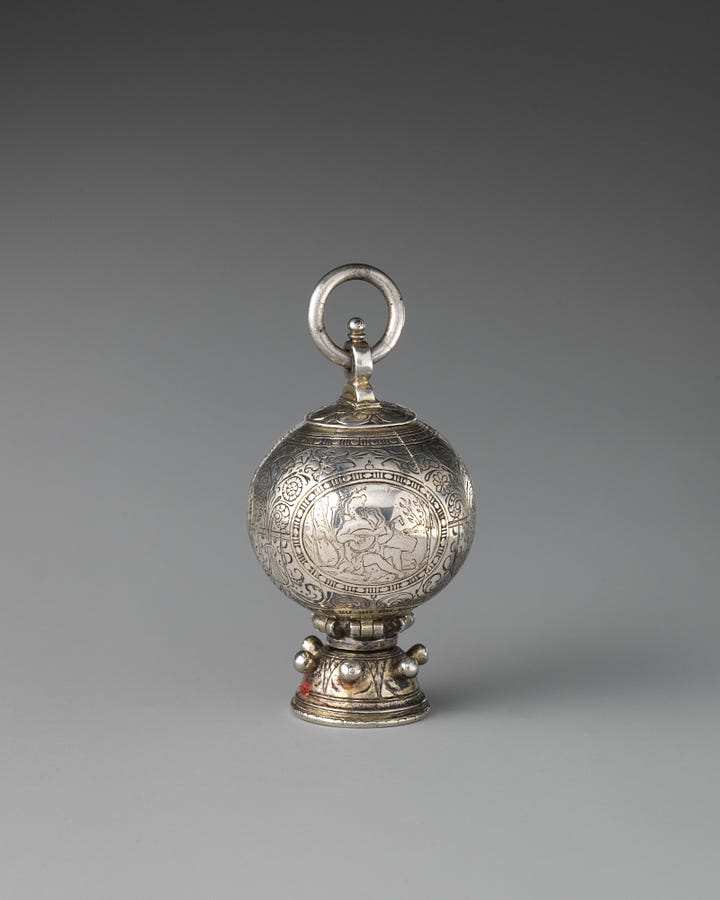
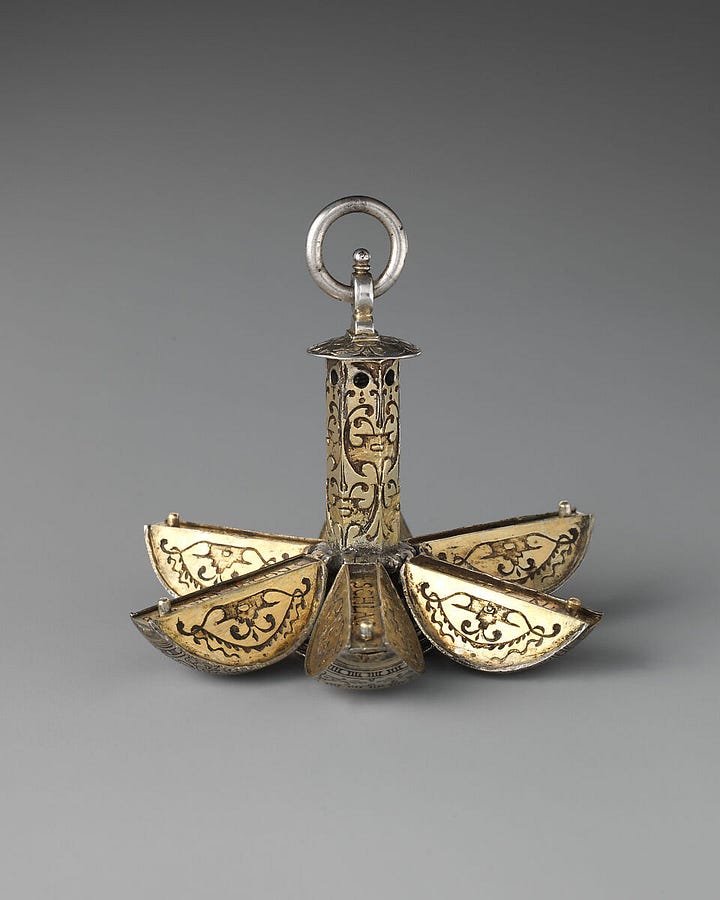
Gloves off
The amber scented gloves: The way the leather was processed, they stank a bit, so they started to perfume them. But you also have to be careful: Jeanne III of Navarre buying poisoned gloves from Catherine de Medici's parfumeur, René by Pierre-Charles Comte, 1852
Antidote: Drink tea
This is a bizarre object that I stumbled across this week, a Bezoar. A stomach stone from e.g. goats, cattle or chamois consisting of indigestible materials, which was particularly valued as an antidote to poisons. Large stones were considered very valuable and were set in gold. The stone was placed in water like a tea bag. I'm sure Norfolk had something like that hanging around his neck next to his relic bones. Bezoar, End of 16th century, Kunsthistorisches Museum Wien.
As a rule, I try to stay in the 16th century with the paintings and works of art (with some excursions into the early 17th century), as I hardly know anything about this period and I want to find out more and learn about it (and there are great things from this period!). But this week I couldn't resist the two paintings on display are set later, especially the second one.




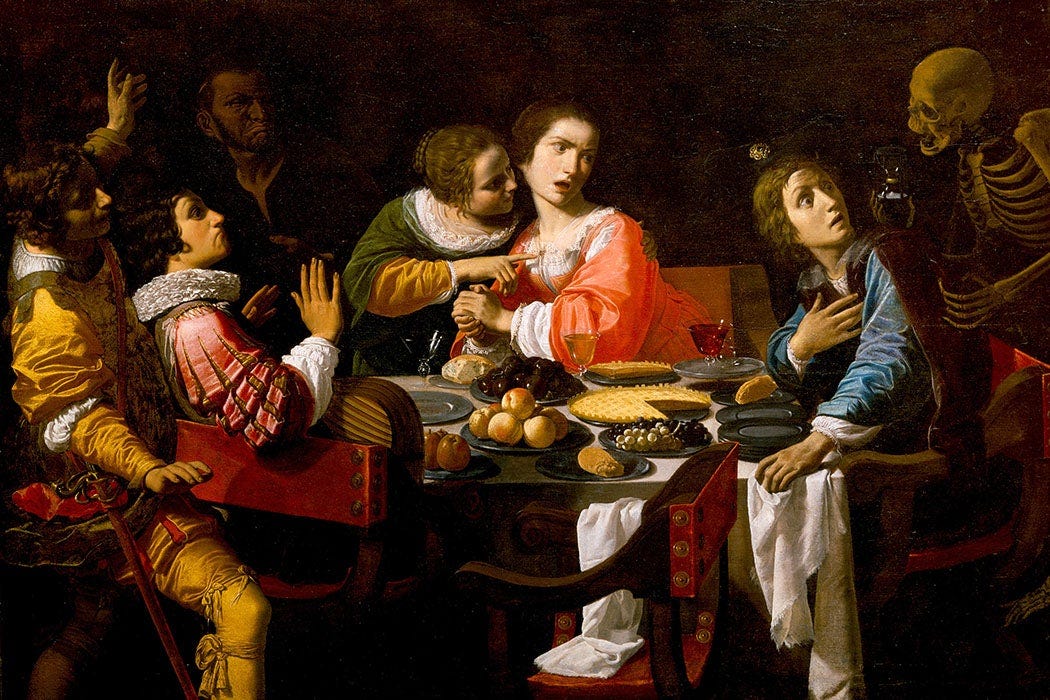
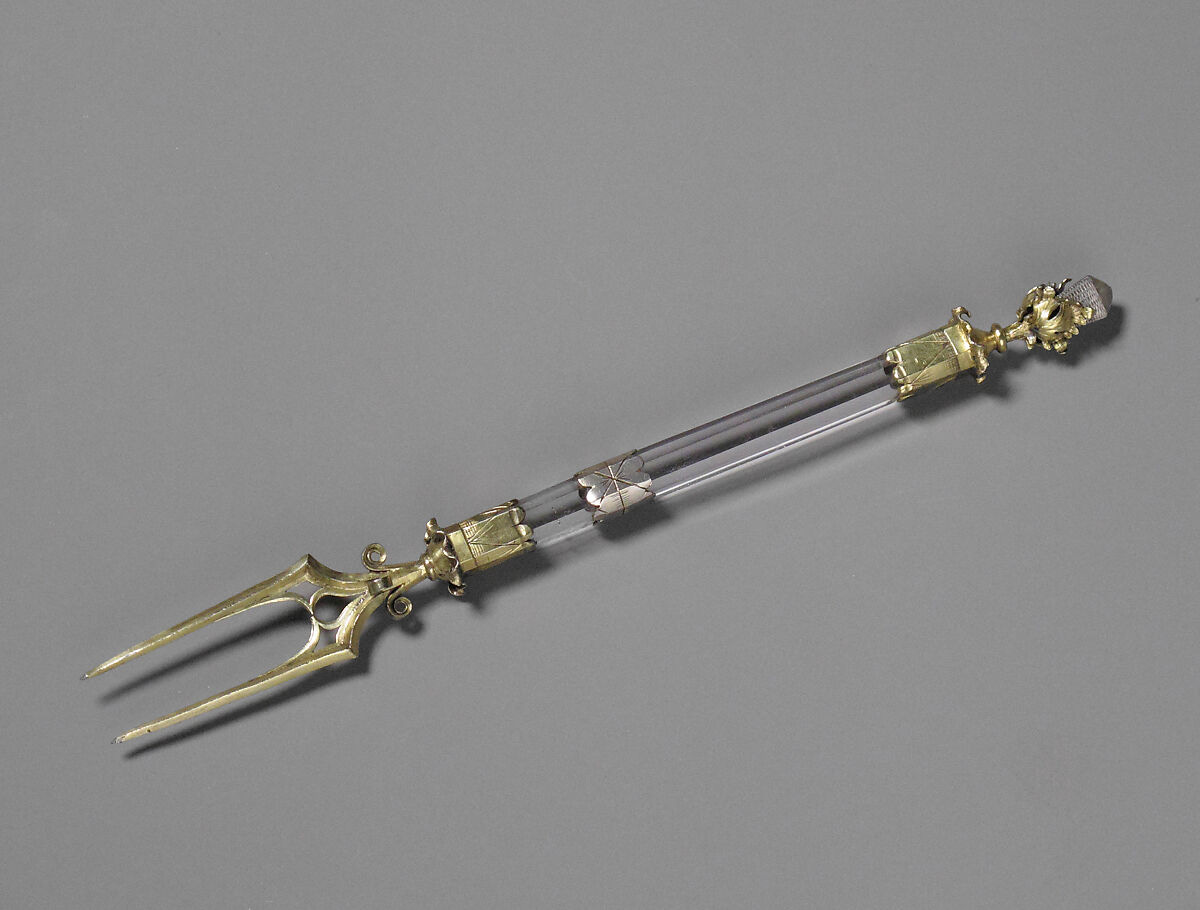
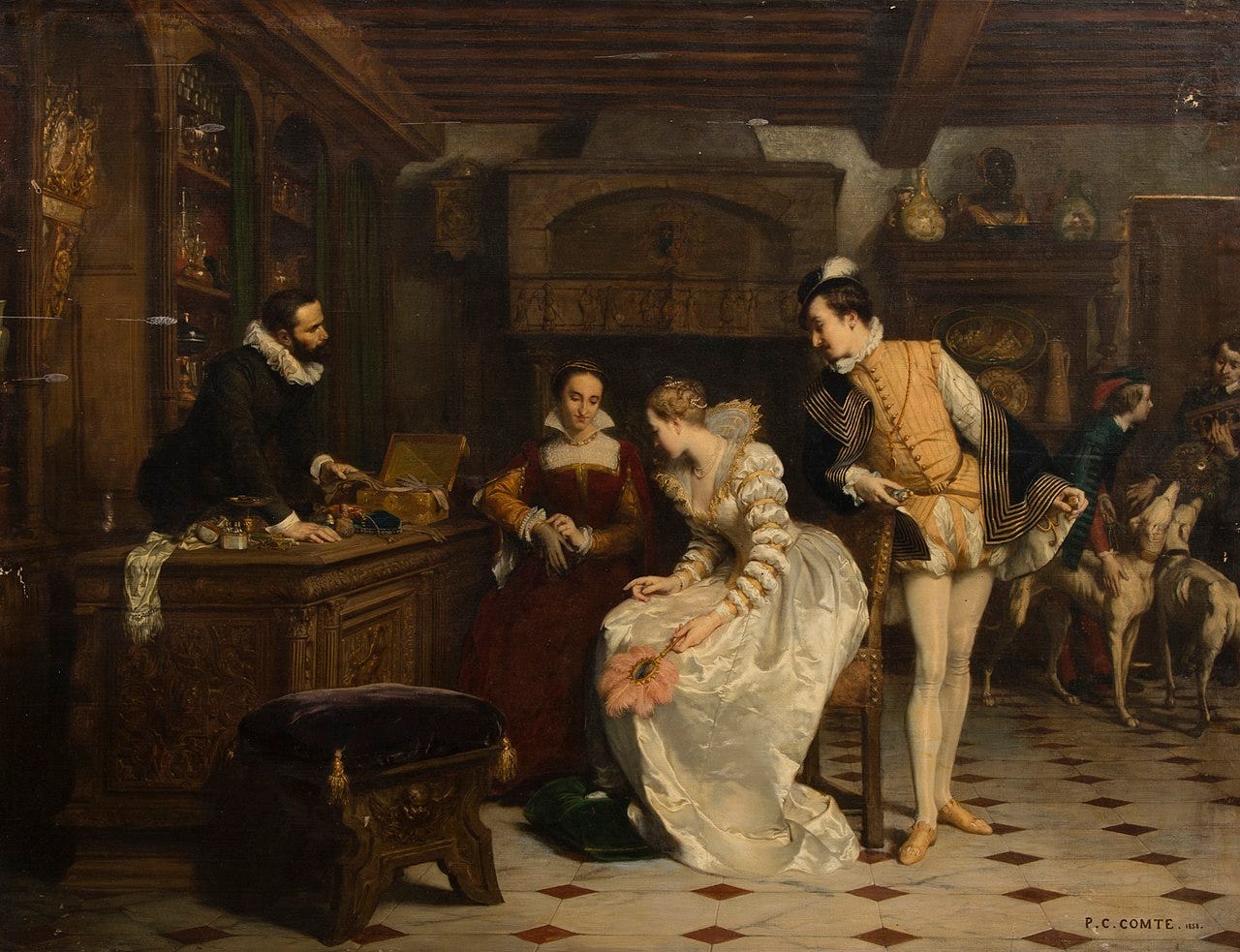

I learned about bezoars at the tender age of 10 thanks to Harry Potter
I feel it's somewhat overlooked how unusual a fork as a gift might be, like, a single utensil, for the King's woman? I think they weren't that commonly used back then, see this paragraph from an article I've found: "Fast forward a few centuries, and forks had become commonplace in Italy. Again, international marriage proved the catalyst for the implement's spread—Catherine de Medici brought a collection of silver forks from Italy to France in 1533, when she married the future King Henry II. In 1608, an English traveler to the continent, Thomas Coryate, published an account of his overseas observations, including the use of the fork, a practice he adopted himself. Although he was ridiculed at the time, acceptance of the fork soon followed." (https://www.smithsonianmag.com/arts-culture/a-history-of-western-eating-utensils-from-the-scandalous-fork-to-the-incredible-spork-64593179/) So, TC appears to be quite in the avant-garde here in terms of trends and probably this present is a nod to Anne that she's quite like that, too?